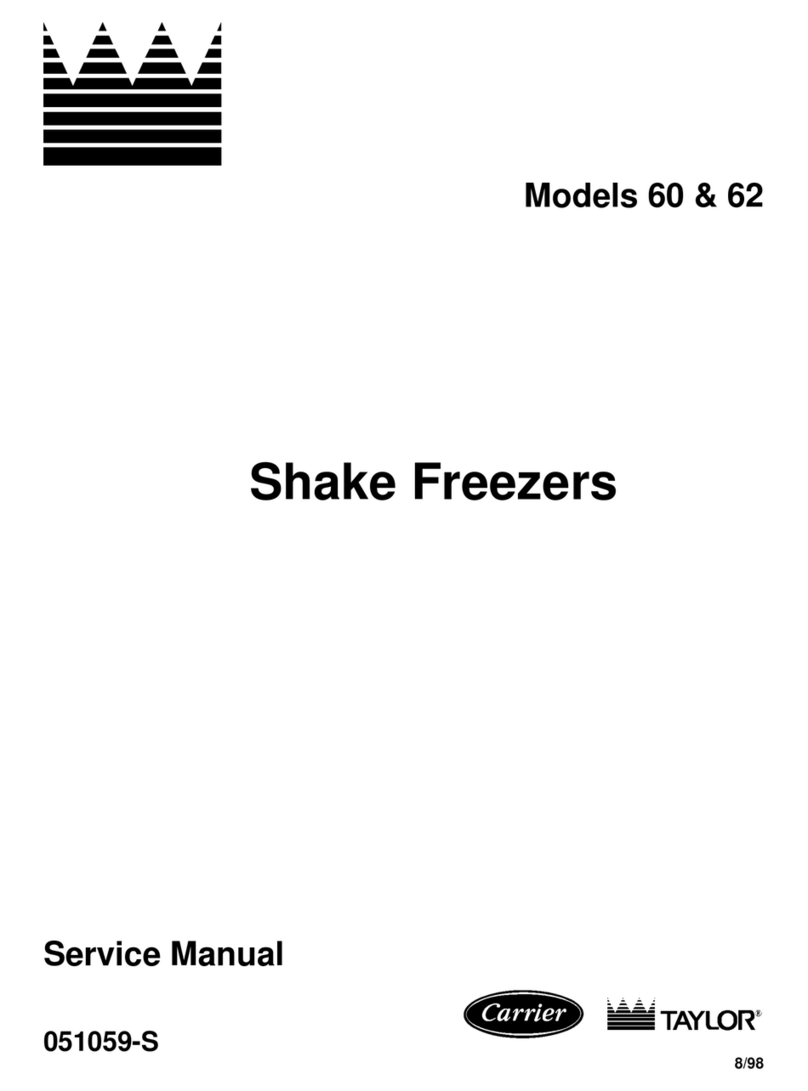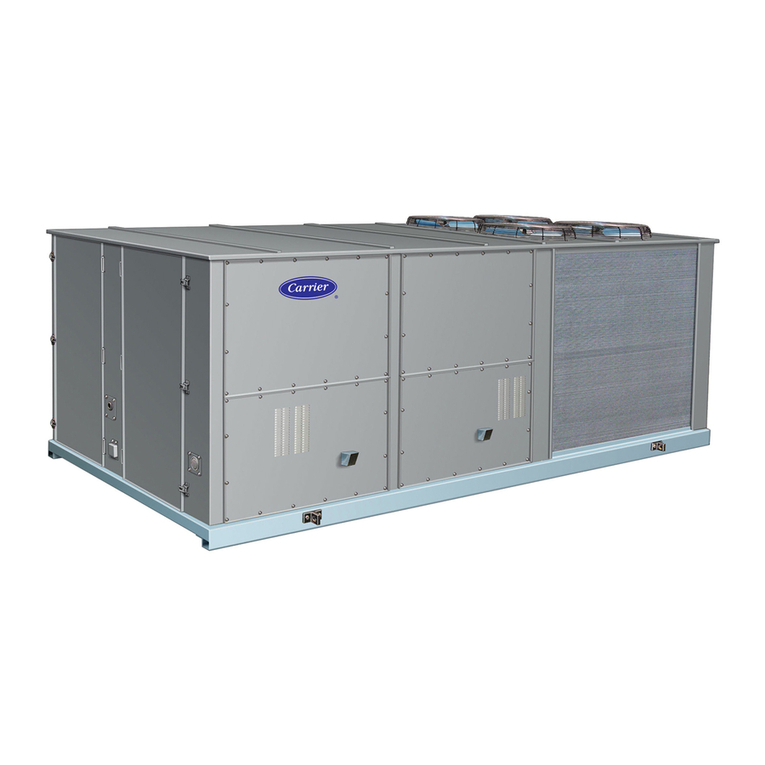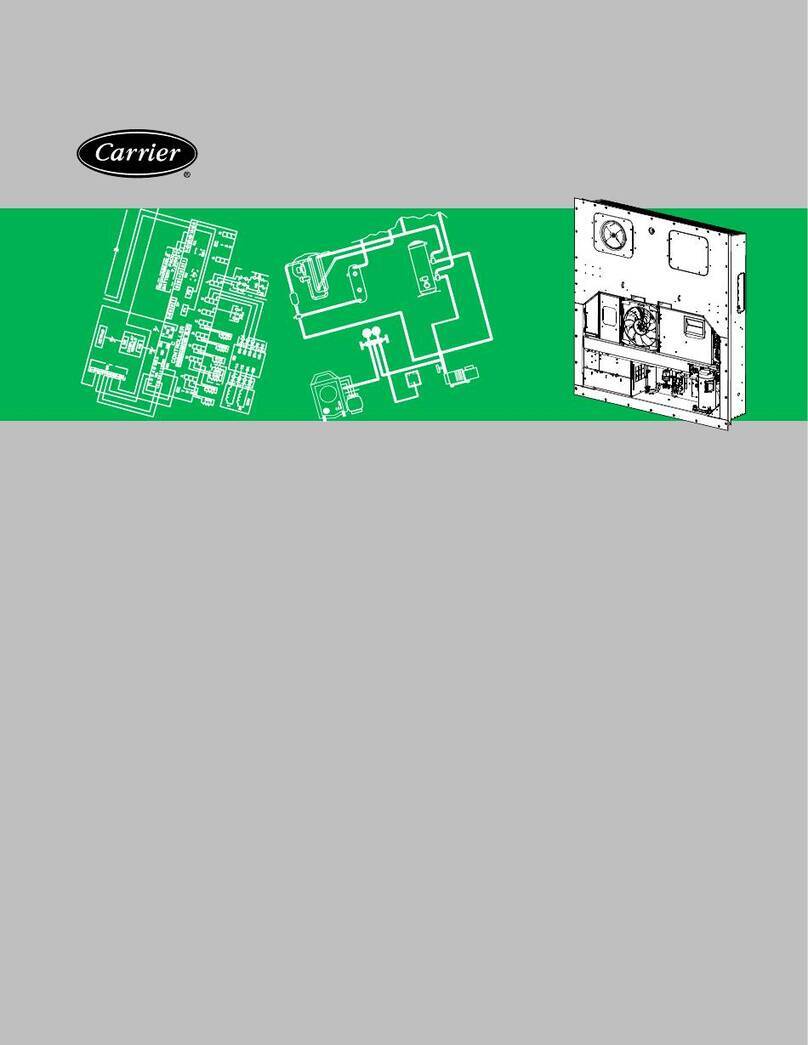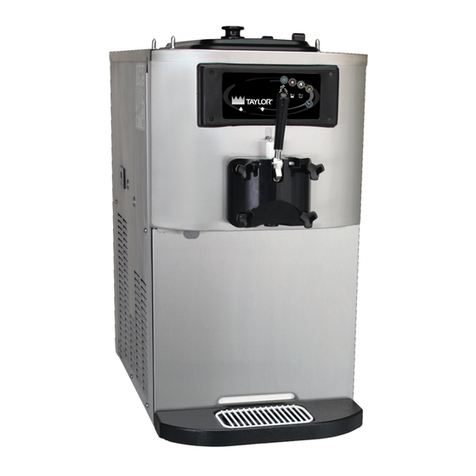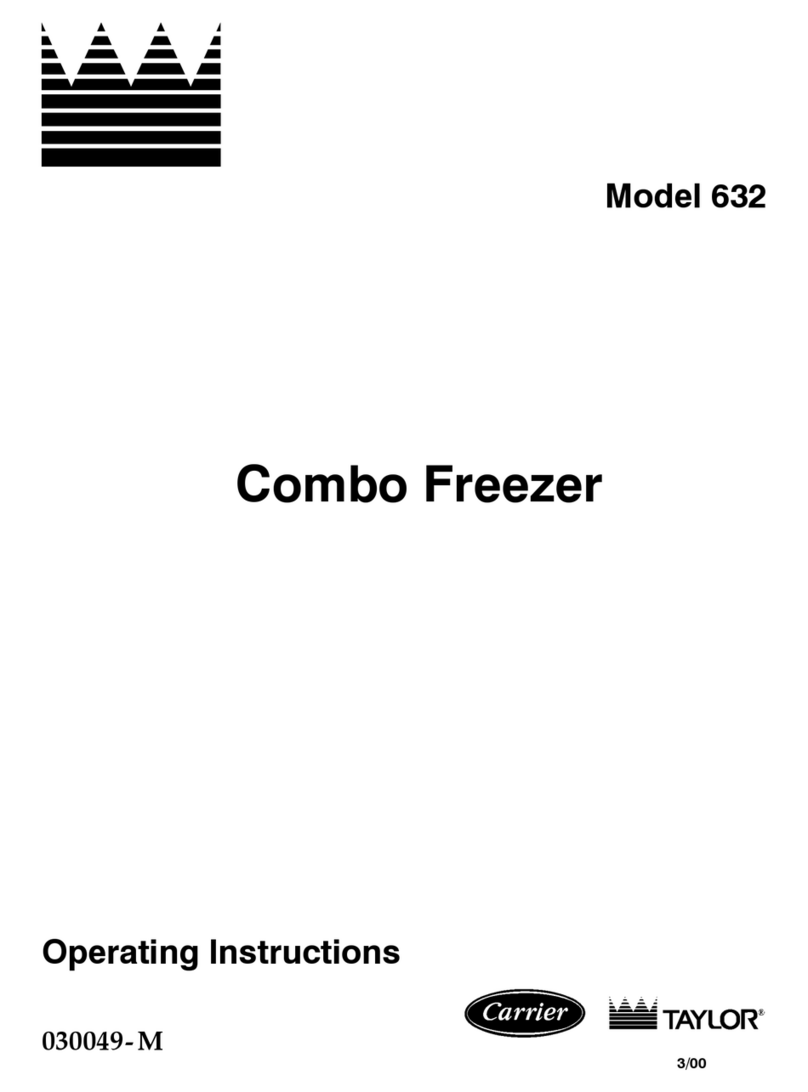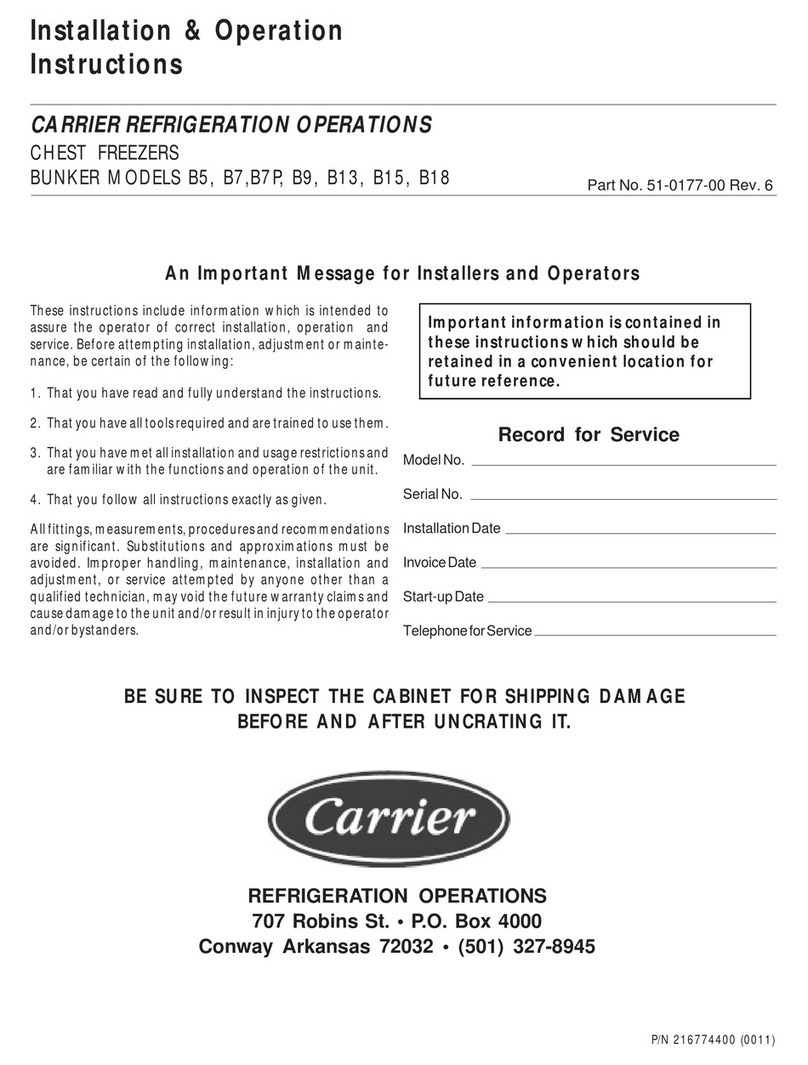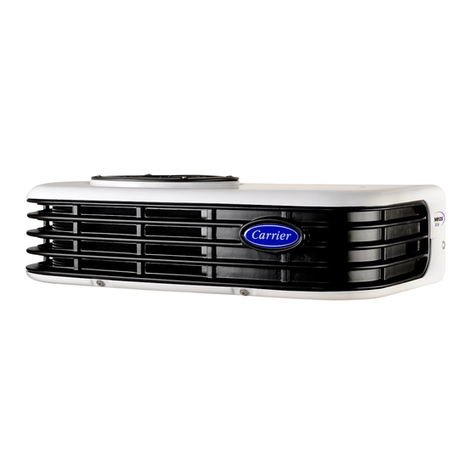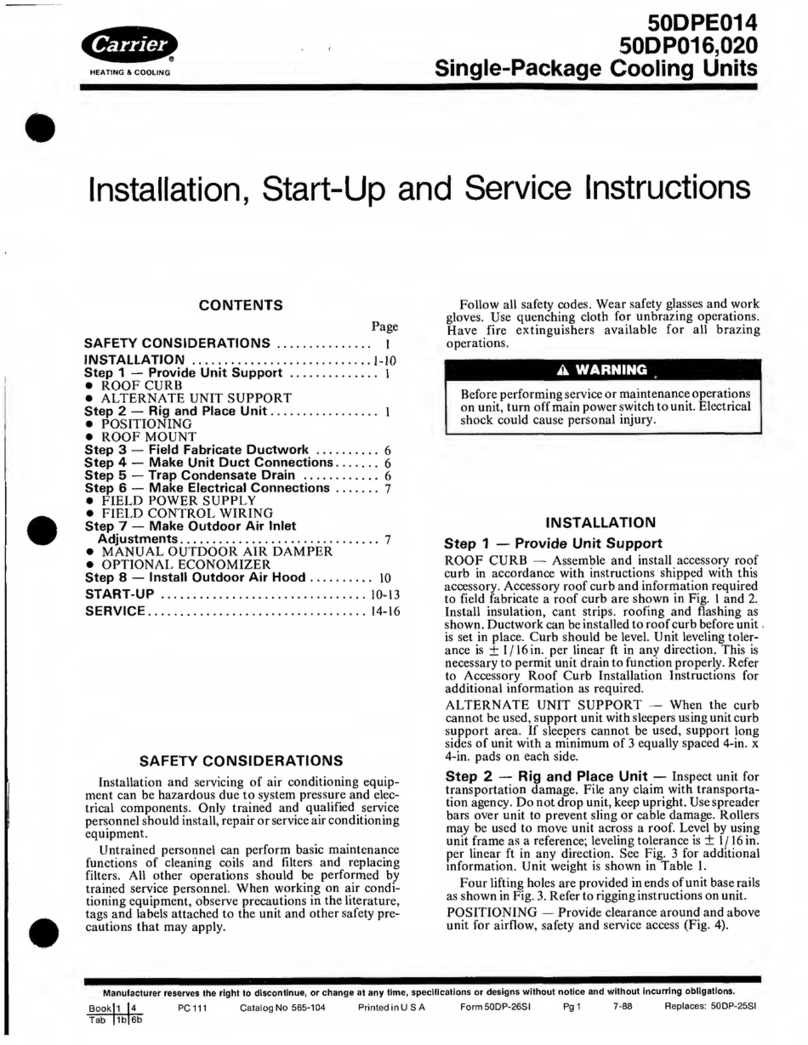
2
EconoMi$erRX (Factory--Installed Option) 25......
Product Description 25........................
System Components 25.......................
Specifications 25..............................
W7220 Economizer Module 25.................
Electrical 25................................
Inputs 25...................................
Outputs 26.................................
Environmental 26............................
Economizer Module Wiring Details 26...........
S--Bus Sensor Wiring 26......................
CO2Sensor Wiring 27........................
Interface Overview 27..........................
User Interface 27............................
Keypad 27.................................
Menu Structure 28.............................
Setup and Configuration 28.....................
Time--out and Screensaver 28..................
Sequence of Operation 34.......................
Enthalpy Settings 38...........................
Two--Speed Fan Operation 38....................
Checkout 39.................................
Power Up 39................................
Initial Menu Display 39.......................
Power Loss (Outage or Brownout) 39............
Status 39...................................
Checkout Tests 39...........................
Troubleshooting 39............................
Alarms 39..................................
Clearing Alarms 39..........................
Low Ambient Control (Factory Option) 40.........
Staged Air Volume (SAVt) with Variable
Frequency Drive (Factory--Installed Option) 40......
ComfortLink (Factory--Installed Option) 40.........
PremierLinktController (Factory--Installed Option) 43
Supply Air Temperature (SAT) Sensor 46.........
Outdoor Air Temperature (OAT) Sensor 46.......
EconoMi$er2 46.............................
Field Connections 46..........................
Space Sensors 49............................
Connect Thermostat 49.......................
Configure the Unit for Thermostat Mode 49......
Economizer Controls 50........................
Indoor Air Quality (CO2)Sensor 50.............
Outdoor Air Quality Sensor 50.................
Space Relative Humidity Sensor or
Humidistat Connections 51....................
Smoke Detector/Fire Shutdown (FSD) 51.........
Filter Status Switch 52........................
Supply Fan Status Switch 52...................
Remote Occupied Switch 52...................
Power Exhaust (output) 52.....................
CCN Communication Bus 52..................
RTU Open Controller System 54.................
Supply Air Temperature (SAT) Sensor 57.........
Outdoor Air Temperature (OAT) Sensor 57.......
EconoMi$er2 57.............................
Field Connections 58..........................
Space Temperature (SPT) Sensors 58............
Indoor Air Quality (CO2)Sensor 58.............
Outdoor Air Quality Sensor 59.................
Space Relative Humidity Sensor or Humidistat 59..
Smoke Detector/Fire Shutdown (FSD) 60.........
Connecting Discrete Inputs 61..................
Communication Wiring -- Protocols 61............
General 61.................................
Local Access 62..............................
RTU Open Controller Troubleshooting 62........
Outdoor Air Enthalpy Control 63.................
Differential Enthalpy Control 63................
Return Air Enthalpy Sensor 63.................
Smoke Detectors 64...........................
Step 11 -- Adjust Factory--Installed Options 64........
Step 12 -- Install Accessories 65...................
Step 13 -- Check Belt Tension 65...................
START--UP CHECKLIST 67.......................



